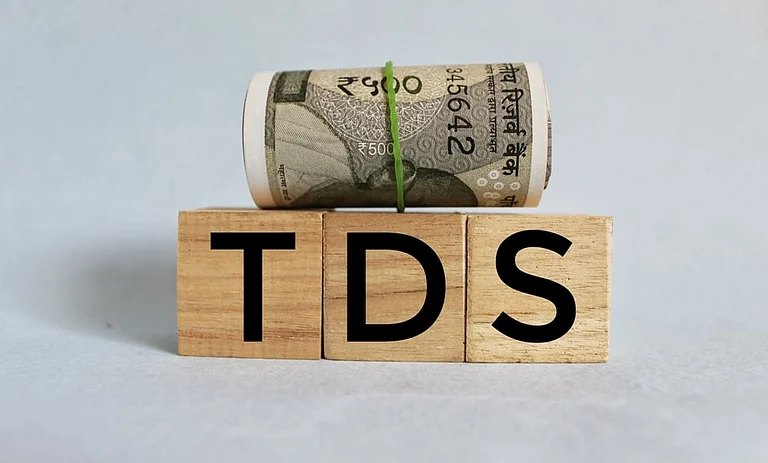In a small but significant change, the government’s draft of the new Income Tax Bill 2025 quietly intends to shut the door on something many taxpayers, especially NRIs, rely on to avoid unnecessary tax deduction: the Nil TDS Certificate.
Until now, if your actual tax liability on an income was zero, you could apply for this certificate and ensure no tax was deducted at source. The certificate helped taxpayers avoid the hassle of tax refunds later. However, with just two words, “no deduction”, missing from the new draft’s clause on tax deduction certificates, that option may be gone for good.
So, what would this mean in practice? Before we go over that, it is important to understand what the Nil TDS Certificate is and how it helped taxpayers.
We can understand this with the help of an example. For instance, you are about to receive a sum, say Rs 10 lakh, but your tax liability on it is nil due to exemptions, losses, or other reasons (as applicable under the income tax rules). Despite this, the law mandates that TDS (which is Tax Deducted at Source) must be cut before you receive the amount. Without a Nil TDS Certificate, the payer would deduct tax anyway, say Rs 1 lakh, and you would have to file an income tax return to claim it back.
In such cases, the Nil TDS certificate gave taxpayers a way out of this. If the tax officer is satisfied with your claim, they will issue a certificate instructing the payer not to deduct any tax at all. This convenience is what might now be off the table.
What is replacing it?
The New Income Tax Bill (ITB) 2025 talks about only a ‘lower deduction’ option under Clause 395. This means you can still approach the tax officer and argue that your actual tax liability is lower than the default TDS rate. If the authority agrees, a certificate will be issued instructing the payer to deduct tax at a reduced rate but not ‘zero’.
This means that, now, instead of avoiding TDS altogether, you will now have to accept some level of deduction, however small. And yes, this also means dealing with refunds later through the income tax return filing process.
Why did the government do away with ‘Nil TDS Certificate’?
This change might just not be about collecting tax early since TDS is also a reporting tool for the government.
When tax is deducted and deposited, the income itself gets reported to the tax department. This helps the government to track financial activity, reducing the chances of people hiding income or under-reporting it.
By removing the option of nil deduction, the government is probably working to ensure that every transaction, regardless of whether tax is ultimately payable, leaves a trail. According to a report by the Economic Times, in cases where the actual tax liability is zero, officers have reportedly already been issuing certificates at token rates like 0.1 per cent. This way, the deduction is negligible, but the reporting still takes place.
What does this change mean for taxpayers?
The impact of this change would differ depending on who you are, for instance:
The change is a big one for NRIs, here’s how: Earlier if you earned income in India but were otherwise exempt from tax due to treaty benefits or lower thresholds, you could skip the TDS entirely with a Nil Certificate. Now you will have to accept the deduction, file a return, and then wait for the refund.
For entities like startups and businesses (particularly those in early stages and are operating at a loss) this change could mean an added burden on working capital. Even if there is no actual tax due, money would still be deducted and locked away until it is refunded.
For pension funds, charitable institutions, and tax-exempt entities, the story remains similar. Any payment received would come with some (even if lower) deduction attached. This would be regardless of payment/transaction being tax-exempt.
Is this change useful?
Experts believe that the removal of the Nil Tax certificate still has a brighter tone to it. How? They see it widening the scope of taxpayers getting lower deduction certificates. Moreover, the ET report notes that the change would also mean that this certificate would now be open to other type of incomes, including those that were previously excluded like foreign interest or certain capital receipts.
This kindles the hope that the system will become more consistent and fair in that sense.
Here’s what taxpayers should know:
This change will only come into effect once the ITB 2025 is effective and brought into practice, replacing the Income Tax Act, 1961.
Once it is applicable, taxpayers expecting income that will attract TDS (but the actual tax liability is low) would apply for a lower TDS certificate under Clause 395.
Even if you are an NRI or a tax-exempt entity, you will need to file an ITR to claim your refunds.
Most importantly, it is important for taxpayers to keep an eye for the final version of the Income Tax Bill.
In conclusion, this could be a shift towards more transparency and compliance tracking rather than a direct revenue push for the government. Though the ITB intends to do away with Nil TDS Certificate, taxpayers can still manage lower TDS with planning and being aware of the changes.













